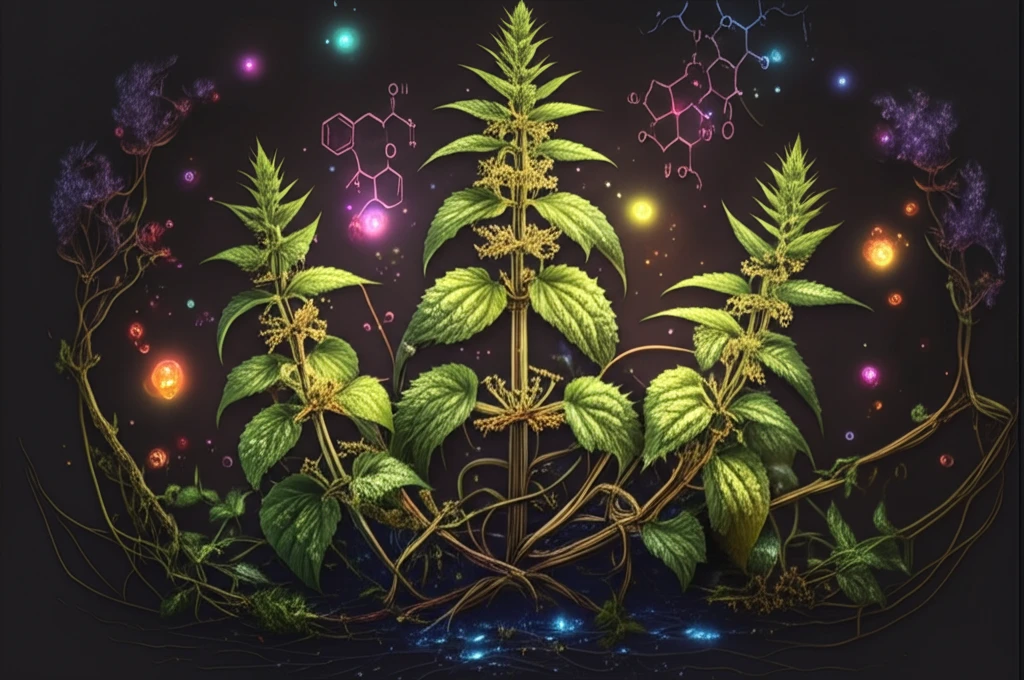
Unlocking the Secrets of Nettles: Exploring the Benefits of Urtica Species
"Dive into the world of Urtica urens, Urtica membranacea, and Urtica pilulifera to discover their hidden phytochemical treasures and potential health applications."
For centuries, the common nettle, scientifically known as Urtica dioica, has been more than just a pesky weed. Recognized for its stinging leaves, it has also been valued for its medicinal properties and nutritional content. Beyond Urtica dioica, the genus Urtica includes a variety of species, each with its unique characteristics and potential benefits. In this article, we delve into the phytochemical composition of three notable Urtica species: Urtica urens, Urtica membranacea, and Urtica pilulifera, exploring their potential contributions to health and wellness.
A recent study published in the Journal of Applied Biosciences investigated the phytochemical profiles of Urtica urens, Urtica membranacea, and Urtica pilulifera, all of which are abundant in the Meknès region of Morocco. The research aimed to identify and quantify the various bioactive compounds present in these species, shedding light on their potential antibacterial and medicinal properties. This article synthesizes the study's key findings and explores their implications for future research and applications.
While the stinging nettle (Urtica dioica) is well-known, related species like Urtica urens, Urtica membranacea, and Urtica pilulifera have distinct properties of their own. Understanding these differences is key to unlocking their full potential. This article explores what makes each species unique, their phytochemical composition, and their potential uses.
Decoding the Unique Phytochemical Profiles of Three Urtica Species

The researchers conducted a comprehensive phytochemical screening of the aerial parts of each Urtica species, analyzing both crude and fractionated extracts. Their analysis revealed the presence of diverse secondary metabolites, including tannins, flavonoids, sterols, triterpenes, and leucanthocyanins. Notably, mucilage was found exclusively in Urtica urens. These compounds are known for their antioxidant, anti-inflammatory, and antimicrobial properties, suggesting potential applications in various health-related fields.
- Tannins: Known for their astringent properties and potential antioxidant effects.
- Flavonoids: Powerful antioxidants with anti-inflammatory and cardiovascular benefits.
- Sterols and Triterpenes: Compounds that can influence hormone production and have anti-inflammatory effects.
- Leucanthocyanins: Antioxidants that contribute to the plants' defense mechanisms.
- Mucilage: A gelatinous substance with soothing and protective properties, found only in Urtica urens in this study.
The Future of Nettle Research: Applications and Potential
This study highlights the potential of Urtica urens, Urtica membranacea, and Urtica pilulifera as valuable sources of bioactive compounds. Their abundance, ease of cultivation, and diverse phytochemical profiles make them promising candidates for further research and development. Future studies should focus on optimizing extraction methods, exploring synergistic effects, and investigating the potential applications of these species in functional foods, cosmetics, and pharmaceuticals. With continued research, these often-overlooked nettles could offer novel solutions for promoting health and well-being.
